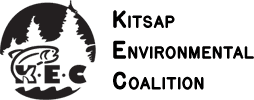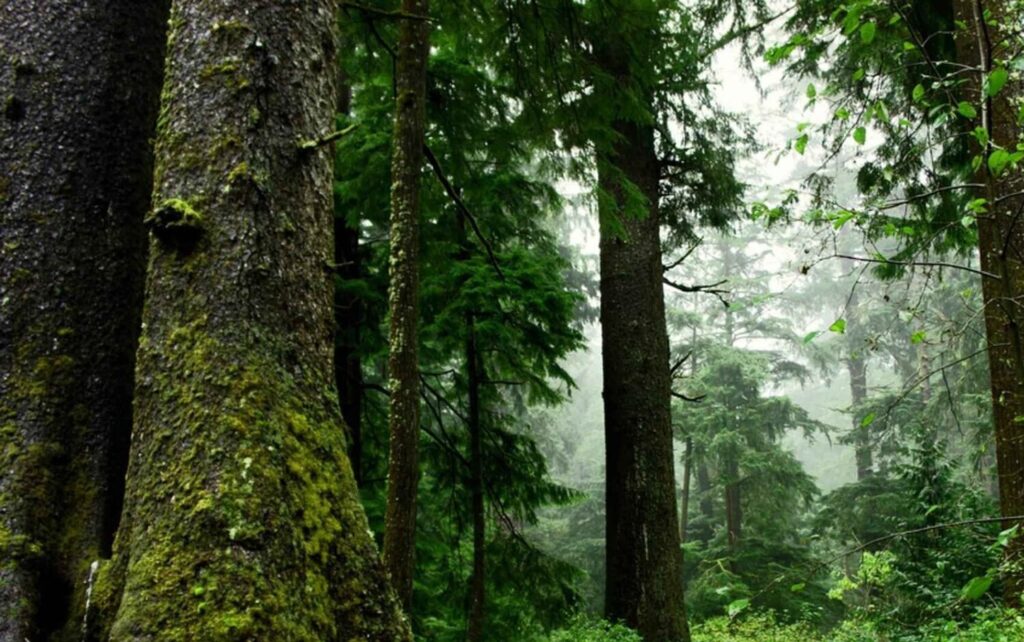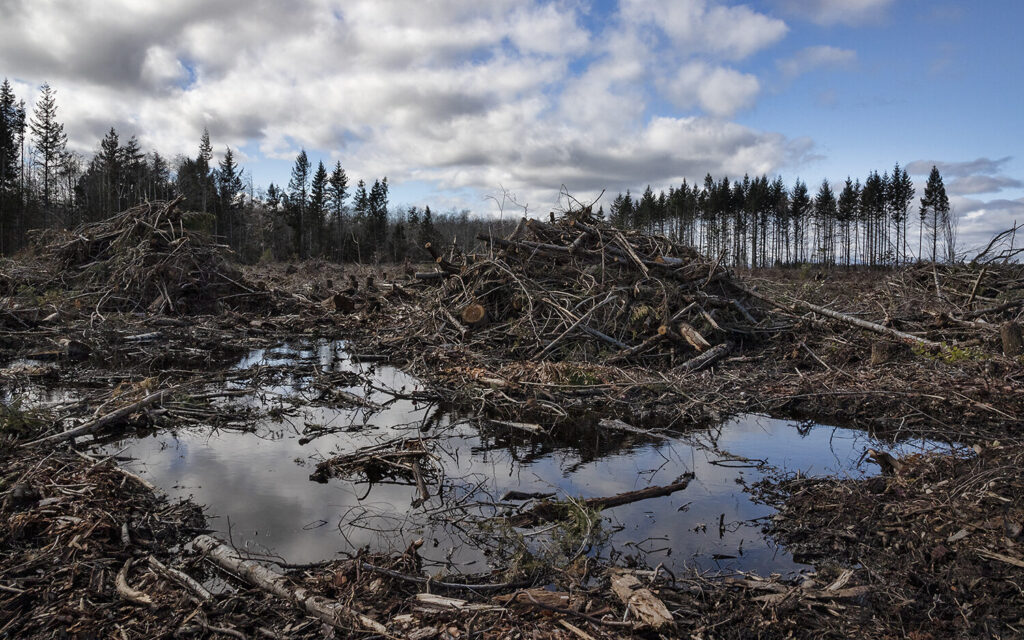STOP CLEAR-CUTTING OF WASHINGTON STATE FOREST LANDS
We, the undersigned, call on Washington State leaders to take actions that will STOP ALL CLEAR-CUTTING OF STATE FOREST LANDS FOR TEN YEARS. The urgency of impending (and already begun) climate catastrophe outweighs all other considerations regarding our forests. We understand that livelihoods and the state’s funding are linked to the current way our state manages its forests. But we can no longer afford to maintain the present system at the expense of the planet’s greater survival. Destructive wildfires have become routine, their smoke choking our towns and cities; summers are hotter and drier; hemlocks and cedars are dying: climate change is already with us. The time has come to direct all possible resources toward realistic solutions for preserving the precious ecosystem that sustains life.
- Typical whole and intact Pacific Northwest forest
- Plateau section showing destruction from clear cutting of Pt. Gamble Forest Heritage Park, Poulsbo, Washington March 2021
A 10-year moratorium on clear-cutting can help offset 52.5 million metric tons of greenhouse gases from the present Washington State carbon footprint and restore the health of the forests, soil, water, air and all species that depend on forests for habitat and food. The moratorium on clear-cutting does not advocate ceasing all timber harvesting.Clear-cutting has involved large-scale application of toxic herbicides. The use of sustainable alternatives will promote the recovery of habitat critical to the health of soil, wildlife, streams and sea life, including salmon and orcas —ultimately, every aspect of the natural environment. The elimination of toxic herbicides also protects human health.
The tribal nations of Washington State are the original stewards of the environment, living with the natural world in mutuality, not exploitation. Just as indigenous people’s identities, health, and survival depend on nature in balance, so does the survival of all Washingtonians.
A moratorium on clear-cutting might seem like an inconceivable social and economic shift. But if the coronavirus pandemic has taught us anything, it is that when a great crisis occurs, citizens and leaders are capable of marshaling the will for great, and rapid, change.
For more information, visit Kitsap Environmental Coalition: www.kitsapenvironmentalcoalition.org or email info@kitsapenvironmentalcoalition.org
To sign and support this moratorium, click on the following link:
SPONSORS:
Kitsap Environmental Coalition
350 West Sound Climate Action
Mason County Climate Justice
Frequently Asked Questions
The following Frequently Asked Questions (FAQ) provides background for this petition:
How does this request fit with the mission of the Washington State Department of Natural Resources?
In its own words, the mission of Washington State’s Department of Natural Resources (DNR) is to “manage, sustain, protect the health and productivity of Washington’s lands and water to meet the needs of present and future generations.” It also has responsibilities for some funding of education and county services through its trust lands.
Currently, the priority appears to be the state budget rather than protecting our ailing forests, lands, and waters. The routine business of the Board of Natural Resources (BNR, which oversees the DNR) consists of selling state lands, and timber rights on state lands, to the highest bidder in order to help fund state schools and county services.
Current forestry practices do not support the long-term health of our forests that are essential to the well-being of all of life for future generations.
If clear-cutting is not allowed, what forestry would be allowed?
Rather than engaging in clear-cutting of even growth trees, we call on DNR to look at alternative methods. These may include selective logging (harvesting) of uneven growth trees. That is, a forest needs to have trees of many different ages to support the health and well-being of the soil, water, plants, and animals in the forest. Such harvesting needs to be done in a way that preserves the many functions of trees in a forest. We also call on DNR to be receptive to Indigenous approaches to forestry.
Why is stopping clear-cutting of our forests so important?
Here are three reasons: (a) the ability of forests especially mature trees to sequester carbon, (b) the prevention of forest fires, and (c) the protection of biodiversity of plant and animal species.
Carbon Sequestration
As the Washington Environmental Council (WEC) has stated: The forests of the Pacific Northwest are among the most carbon-dense ecosystems on the planet. Short rotations and intensive harvesting significantly reduce our forests’ ability to sequester carbon. Carbon sequestration can be dramatically increased by changes in forest management.
A diverse forest with the many forms of life within it, contributes to the natural cycle of water (including capturing moisture from the clouds and bringing it down to the streams), the protection of the streams (through, e.g., shading the streams from excessive heat from the sun and maintaining the structure of the soil during heavy rains), the support of species from bacteria and fungi in the soil to large mammals that live in the forests, and more.
In industrial-scale forestry, trees are often harvested when they are in the 40-50 age range when their natural life is in the range of 100-120 years. Those trees are being harvested as they approach the years when they are sequestering the most carbon.
Forest Fire Prevention
In September 2020, entire towns and forests in Washington, Oregon, and California were devastated by wildfire and the very air we breathe was being polluted. Accelerating climate change, long predicted, is surely to blame.[1] Clear-cutting is hastening the irreversible loss of habitat for wildlife and livable environment for human beings. Clear-cutting relies on use of toxic pesticides which also act as desiccants—drying agents which enhance flammability.
Protection of Biodiversity
Biodiversity of plants and animals is an essential means by which nature handles the range of conditions that affect life. Although we often want to think otherwise, humans have insufficient knowledge to handle the complexity of nature. The diversity of trees and other species which make for a regenerative forest that maintains flexibility and supports the biodiversity needed to sustain life is being undermined by clear-cutting.
How are decisions being made about forestry practices?
Currently the interests of industry, big business, and the prioritization of using our forests to generate revenue, have dominated decision-making. Despite the pleas of citizens’ groups citing scientific evidence of the direct relationship between deforestation and climate change, the current practices of DNR are hastening climate collapse.
See related article in the Seattle Times: https://www.seattletimes.com/seattle-news/environment/amid-climate-crisis-a-proposal-to-save-washington-state-forests-for-carbon-storage-not-logging/
How urgent is the need for a moratorium on clear-cutting?
The UN has warned that ten years remain to affect climate change. The recent fire crisis in California, Oregon, and Washington, are evidence of the urgency and suggest that ten years may be optimistic.
See related ‘TEDx Talk’ video: https://youtu.be/2mCu3rRZUjI
Can we make such a major change?
The state, nation, and world’s response to COVID 19 shows that we can make changes that once seemed impossible when faced with a crisis. Climate change is a bigger crisis than COVID 19; it is just relatively slower moving. However, it’s pace is picking up and is of a greater magnitude. We must leave remaining forest lands to do their precious work of maintaining watersheds and carbon sequestration.
How was the greenhouse gas sequestration amount estimated?
The current WA State carbon footprint is 78.7 million metric tons of CO2. In WA State, DNR manages 2.1 million acres of forest. One acre of forest can sequester 2.5 metric tons of CO2 per year. Then the footprint of CO2 to be sequestered is 5,250,000 equal to 5.25 million metric tons of CO2 per year. Thus, during a 10-year moratorium, 52.5 million metric tons of CO2 would be sequestered.[2]
[2] These calculations are based on the following resources: the decarbonization roadmap shown in https://ecology.wa.gov/Air-Climate/Climate-change/Greenhouse-gases and data from the DNR website, https://www.dnr.wa.gov/page/forest-resources-0 .



